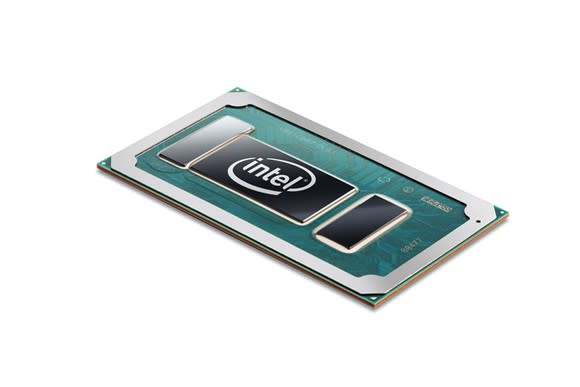A Major Roadblock to Apple's In-House Mac Processor
Apple (NASDAQ: AAPL) intends to design its own processors for future versions of its Mac personal computers, according to Bloomberg. That means the company will be replacing chips supplied by chip giant Intel (NASDAQ: INTC) -- an effort that is being referred to internally as Kalamata.
Although Apple is certainly capable of developing high-performance processors and has nearly infinite financial resources at its disposal, the reality is that this purported transition away from Intel-based processors and toward Apple-designed ones won't be easy.

Image source: Intel.
At a bare minimum, Apple will need to get software developers to recompile their code for the ARM architecture upon which these chips will be built, which will have its own challenges.
And there's another aspect to this whole initiative that people don't seem to be talking about: the sheer number of chips that Apple would have to develop.
A wide product line-up requires more chips
These days, Apple releases roughly two applications processors each year -- a new iPhone chip and a beefed-up version of that chip for the iPad (or as has been the case recently, a beefed-up version of last year's iPhone chip).
For the Mac, however, Apple would need to design a lot of chips, including distinct options for each of the following products:
12-inch MacBook
MacBook Air
13-inch MacBook Pro
15-inch MacBook Pro/iMac
Mac Pro
I count no fewer than five chips here. Even if you wanted to go out on a limb and say that the 12-inch MacBook and even the MacBook Air could use the same processors as the iPad Pro, Apple would still need to develop three distinct chips.
Now, those chips would share some similarities -- they'd probably incorporate the same basic intellectual property (e.g., CPU cores, graphics processor, and so on) as the iPhone and iPad chips, but they'd come in drastically different proportions and would likely require unique interconnect designs (the technology that connects all the individual computing elements). Such an endeavor would be quite expensive, with the problem exacerbated by the fact that Apple would need to amortize that development cost across a relatively small number of chips (Apple only sells about 20 million Macs per year).
For some context, Apple doesn't even find it worthwhile to develop distinct processors for its standard-sized iPhones and its larger-screen models, even though there would be clear benefits for it to do so. In light of that, it's rather astonishing to think that Apple would want to replace Intel across the entirety of its product line.
A more sensible approach
It's clear that Apple can design better processors for very low power envelopes (e.g., 5 watt power consumption) than Intel can, since Apple targets its intellectual properties specifically to those power envelopes, while Intel tries to address a broader range of power consumption with a core set of technologies.
It'd be smarter, then, for Apple to replace Intel-based processors in its 12-inch MacBook using the same processor that it uses in its iPad Pro lineup and then continue to use Intel-based chips in the higher-performance/higher-power models (MacBook Pro, iMac, and Mac Pro).
In fact, I wouldn't be at all surprised if that's the path that Apple ultimately takes. Such a scenario wouldn't require undue effort on Apple's part (since it'd be utilizing a chip that it's already developing for the iPad), and it'd bring Apple's technology to a product category where it has a clear competitive edge over Intel's offerings.
More From The Motley Fool
Ashraf Eassa owns shares of Intel. The Motley Fool owns shares of and recommends Apple. The Motley Fool has the following options: long January 2020 $150 calls on Apple and short January 2020 $155 calls on Apple. The Motley Fool recommends Intel. The Motley Fool has a disclosure policy.
